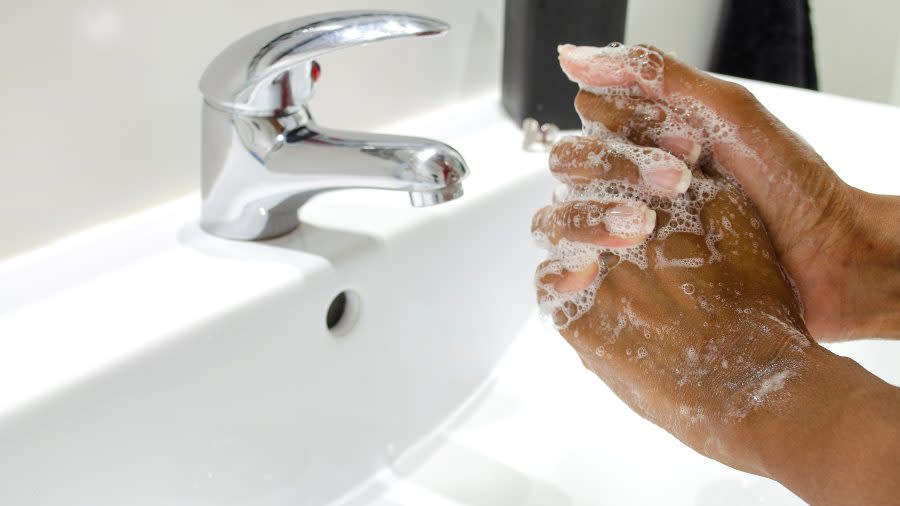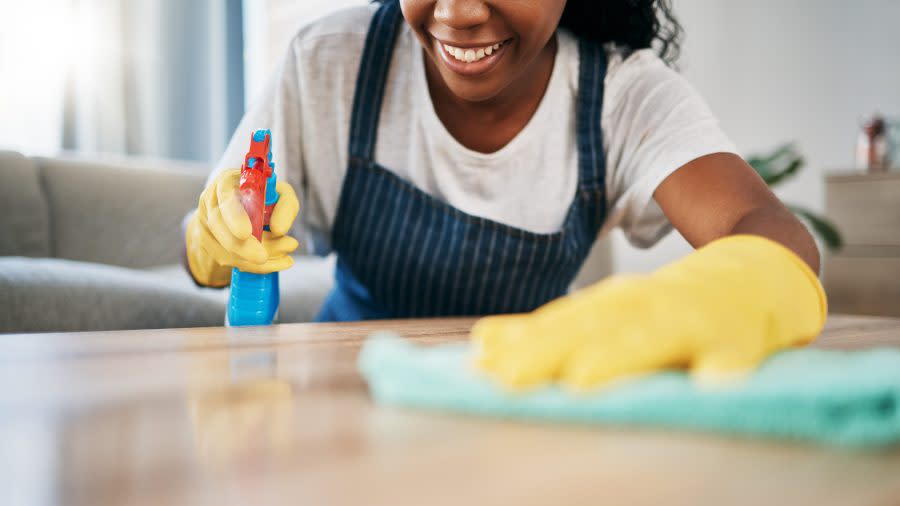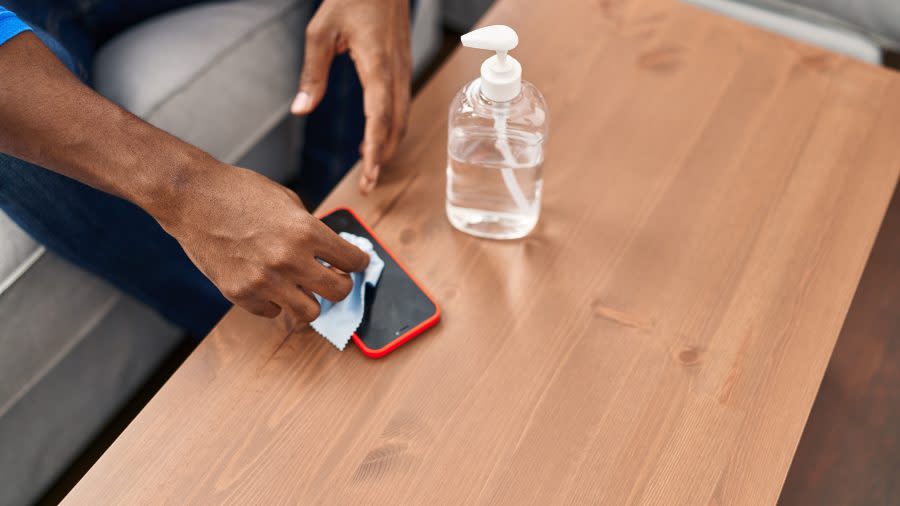13 unsuspecting places germs lurk — in public and at home
As cold and flu season gets closer, theGrio examines some top germ magnets you may not be aware of.
Cold and flu season is approaching, and with both RSV (Respiratory syncytial virus) and COVID-19 surging, it could potentially be a “tripledemic.” In addition to vaccines, protection from these harmful upper respiratory viruses is possible through vigilance in keeping germs at bay.
Cold and flu germs can live between 24 and 48 hours on hard surfaces, and keeping personal spaces clean and exercising caution when in public are the keys to staving off serious illness. Whether it’s cold and flu season or not, staying aware of how often we come into contact with potentially seriously dangerous germs on a daily basis is a survival skill.

From gas pumps to light switches, there are countless opportunities to encounter illness-causing germs, whether at home or in public. At the risk of fueling germaphobia, we’ve rounded up 13 places you may not suspect germs are lurking.
At home

The home is ideally our sanctuary and personal paradise away from the world, but it can also be a toxic germ-fest. Obvious places to keep clean include kitchens, bathrooms, countertops, and other surfaces; however, there are places in our homes that pose far bigger threats than the toilet.
Sinks
Kitchen sinks, which handle all manner of messes and food waste, have more bacteria and germs than a toilet. It isn’t just the sink’s basin, either; if your sink’s drain is outfitted with any sort of flange (usually metal or rubber), that bad boy needs to be regularly and thoroughly cleaned and disinfected, as well.
Sponges and dish rags
While we’re on the topic of the sink, go ahead and throw out that discolored and battered sponge sitting next to it. Many experts advise replacing sponges after a week — two weeks at most. Similarly, dish rags and towels should be washed every three to five days. Otherwise, you’ll just be wiping a menagerie of potentially harmful bacteria and germs back onto your dishes, cookware and surfaces.
Door knobs and light switches
Despite using them every day, all day, doorknobs and light switches are often overlooked by many when it comes to house cleaning. But in terms of germs, both of those pieces of hardware see a lot of action. Hit them with a disinfecting wipe or some disinfecting spray the next chance you get, and do so regularly.
Remotes
The remote control can become a repository for germs in the house — the dog has it in its mouth when the kids aren’t sneezing or coughing on it. Game controllers, TV remotes, and the like need regular, if not daily, wipe-downs.
Appliance buttons
If you touch it, you have to clean it. The buttons on stoves, ovens, microwaves, dishwashers, and refrigerators could harbor major microscopic villains.
Personal belongings

Keys, earbuds, phones, wallets, jewelry — we carry many things with us on a regular basis. Even though most of us shower daily, we rarely clean many of the things that are with us all day long.
Purses, wallets, and other personal bags
Clean them out regularly and disinfect them. Cleaning methods will vary depending on the material and maker, but most canvas items, like kids’ backpacks or tote bags, can be tossed in the washing machine. Leather and suede cleaner exists for our many leather needs, including wallets and bags. There’s a good chance any faux leather items can be put in the washer; if not, gentle handwashing is another approach.
Rings
Believe it or not, rings can be filthy. We’ll spare you the details, but long story short, they pick up much of what we encounter while wearing them. While some studies suggest that rings get clean when we wash our hands while wearing them, others advise the nooks and crannies of your setting need a more thorough cleaning.
Your phone and personal touch
Cell phones are gross. According to CNET, they are 10 times dirtier than toilet seats. That said, it’s nothing a disinfecting wipe at least once a day followed up with a microfiber cloth can’t solve.
In public

Going out in public means going out among germs; there’s no way around it. Long before COVID-19 forced many of us to reckon head-on with how germy the world is, the advice was to wash your hands. Wash them in between activities; wash them before you eat; wash them when you come in from outside; wash them — ideally for at least 20 seconds. And avoid touching your face until you’ve washed your hands. That advice remains golden. Still, there are more ways to be vigilant in public.
Handrails
While they serve a valuable purpose, public handrails are covered in germs and bacteria, whether on public transit or escalators and staircases. Avoid touching them directly, and wash your hands directly after using them.
Shopping cart and shopping basket handles
Just because hand sanitizer or disinfecting wipes are conveniently placed in front of shopping carts or shopping baskets doesn’t mean everyone is taking the hint. Be mindful that different people practice different levels of hygiene, and avoid touching your face while using a basket or cart. Wash or sanitize your hands once you’re shopping is over.
Store counters
Most, if not all, retail establishments have cleaning protocols that include their countertops and surfaces. But this cleaning usually occurs before they open or after they’ve closed, not leaving much protection for customers or workers throughout the busy day. Avoid touching, leaning on, or setting your personal belongings (phone, keys, wallet, etc) on the counters.
Buttons and screens
Placing your order on a screen and waiting for it to appear on the counter may be efficient, but if you’re the hundredth person to touch the screen, it’s also potentially hazardous. Again, make use of any hand sanitizer or disinfectant wipes you see stationed by the screen before and after use. The same goes for any buttons, including in elevators or on credit card readers you may encounter.
Gas pumps
Gas pumps don’t just smell disgusting; they are disgusting. Hundreds, if not thousands of hands touch them on a regular basis, not to mention they live outside in the elements. Reaching for the hand sanitizer after you fill up the tank is highly advised.
It’s a germy world out there. Proceed with caution and hand sanitizer.

Kay Wicker is a lifestyle writer for theGrio covering health, wellness, travel, beauty, fashion, and the myriad ways Black people live and enjoy their lives. She has previously created content for magazines, newspapers, and digital brands.
TheGrio is FREE on your TV via Apple TV, Amazon Fire, Roku, and Android TV. TheGrio’s Black Podcast Network is free too. Download theGrio mobile apps today! Listen to ‘Writing Black’ with Maiysha Kai.
The post 13 unsuspecting places germs lurk — in public and at home appeared first on TheGrio.

